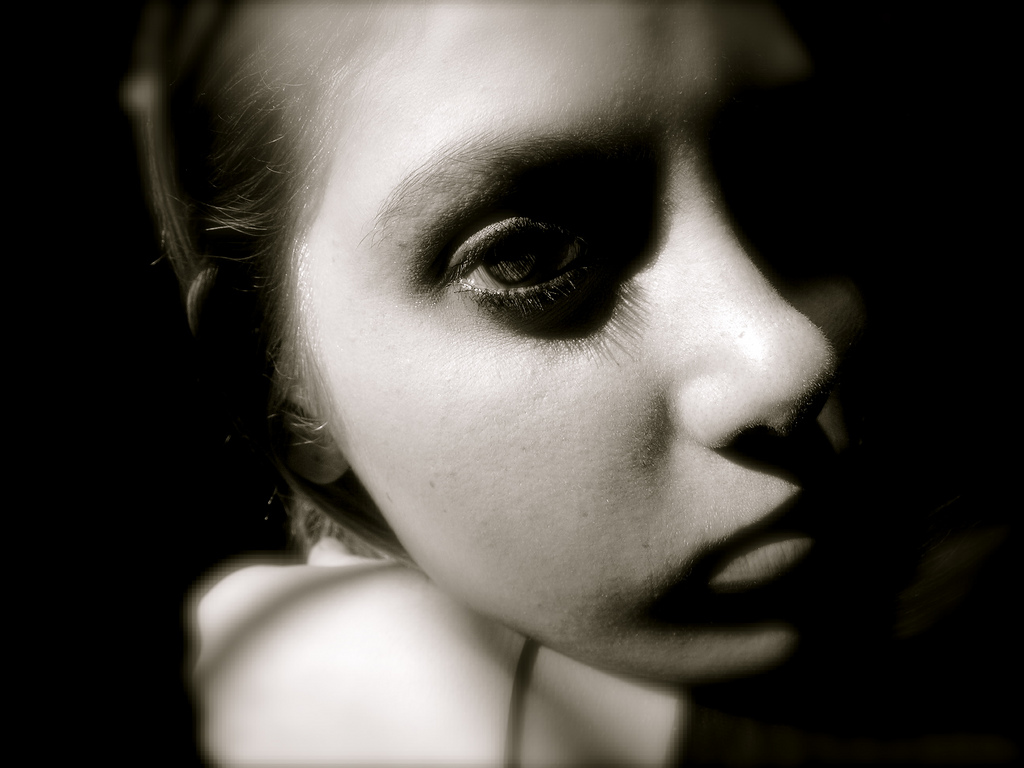Part 1 of a 2-Part Series
Panic disorder (PD) is an anxiety disorder that affects an estimated two to three million people in the U.S. This article explores the physical symptoms associated with PD, some of the neurological research that has provided us with insight into the causes of PD, and various treatment options for sufferers. Although agoraphobia and depression may and often do accompany PD, they are not discussed here.
What is a Panic Attack?
 Panic disorder is characterized by what is known as a panic attack. Panic involves the activation of the alarm response systems that are triggered by one of a number of bodily sensations. These may be caused in various ways, including general sympathetic nervous system overactivity, hyperventilation, increased attention to normal physical sensations, or physical activity (Beamish, Granello, & Belcastro, 2002). All of these symptoms prepare the person for a fight or flight response.
Panic disorder is characterized by what is known as a panic attack. Panic involves the activation of the alarm response systems that are triggered by one of a number of bodily sensations. These may be caused in various ways, including general sympathetic nervous system overactivity, hyperventilation, increased attention to normal physical sensations, or physical activity (Beamish, Granello, & Belcastro, 2002). All of these symptoms prepare the person for a fight or flight response.
The Anxiety Disorders Association of America (ADAA) defines a panic attack as:
…the abrupt onset of an episode of intense fear or discomfort, which peaks in approximately 10 minutes, and includes at least four of the following symptoms: a feeling of imminent danger or doom; the need to escape; palpitations; sweating; trembling; shortness of breath or a smothering feeling; a feeling of choking; chest pain or discomfort; nausea or abdominal discomfort; dizziness or lightheadedness; a sense of things being unreal; depersonalization; a fear of losing control or ‘going crazy’; a fear of dying; tingling sensation; chills or hot flushes.
Living in Dread of a Panic Attack
Panic disorder is diagnosed when an individual suffers at least two unexpected panic attacks, followed by at least one month of concern over having another attack (cited by Beamish, Granello, & Belcastro [2002], from American Psychiatric Association, [1994]). Many of these attacks do not seem to be related to immediate external stimuli and can occur without warning. After experiencing an initial attack, the dread of another attack can be overwhelming. It is this dread that often produces agoraphobia, which is literally a fear of the marketplace. However, the root of the fear is the uncertainty about whether or when another attack will occur, and whether there will be a way to escape it or someone to help one. Many sufferers remain imprisoned in their homes, sometimes for years. If PD endures for a longer time without relief, it may result in depression, substance abuse, suicide attempts, or other anxiety disorders (Beamish, Granello, & Belcastro, 2002).
Women are twice as likely to experience PD as men. PD also has a fifty percent co-morbidity with other psychiatric illnesses (Bourin & Lambert, 2002) and most sufferers will experience their first PD in their mid-twenties (Bourin & Lambert, 2002).
What Causes Panic Attacks?
The causes of PD are thought to be biological, genetic, environmental, and psychological. A study by Katon (as cited in Beamish, Granello, & Belcastro, 2002) indicated that physical illness, major life stress, and stimulant medications that increase activity in the brain may trigger the first panic attacks.
How is Panic Disorder Treated?
The objective in treatment is to obtain at least a 12-month period free of symptoms, before tapering and discontinuing drug therapy (Bourin & Lambert, 2002). However, because incidences of co-mobidity with other psychiatric illnesses (i.e. obsessive-compulsive disorder, post-traumatic stress syndrome, depression) are higher than fifty percent, diagnosis and treatment options can be complicated (Bourin & Lambert, 2002).
In acute cases, benzodiazepines are used to help the patient gain some equilibrium. However, the prolonged use of this class of drug is detrimental due to the risk of dependence and withdrawal symptoms. The most commonly-used drugs are selective serotonin reuptake inhibitors (SSRIs), but their side effects can be detrimental and can include increased anxiety, nausea, and sexual dysfunction (Bourin & Lambert, 2002). Many therapists combine cognitive behavior therapy (CBT) with drug therapy. Studies have indicated that patients who are treated only with drugs, without CBT, will often relapse as soon as the drugs are discontinued.
Drugs Used to Treat Panic Disorder
Long-term care for PD is usually managed with one of three different types of antidepressants: selective serotonin reuptake inhibitors (SSRIs), tricyclic antidepressants (TCAs), and monoamine oxidase inhibitors (MAOIs). TCAs were used before the SSRIs became available for common use. Gorman, Liebowitz, Fyer, and Stein have hypothesized that these medications decrease the excitability of the brainstem areas that are regulated by norepinephrine (NA) and/or serotonin (as cited in Beamish, Granello, & Belcastro, 2002). The TCAs can take up to eight weeks to become effective, which is often discouraging for those who are suffering. TCAs are also anticholinergic, causing a dry mouth, constipation, blurred vision, or memory difficulties (Noyes, Garvey, Cook, & Samuelson, 1989 as cited in Beamish, Granello, & Belcastro, 2002) and have dangerous cardiovascular effects (Bourin & Lambert, 2002).
MAOIs are some of the most potent drugs used for the treatment of PD. However, the patient needs to adhere to a tyramine-free diet for two to three days before taking the medication and continue this for two weeks after discontinuing the MAO drug therapy. Foods containing tyramine include cheese, smoked or pickled fish, fermented meats, red wines, beef or chicken liver, and overripe figs and bananas. There is also a list of foods to be eaten in moderation (Beamish, Granello, & Belcastro, 2002). Most people are put off by the diet and opt for SSRIs instead.
SSRIs have become the drug of choice for the long-term management of PD, mainly because the side-effects are much more tolerable. SSRIs do not initially affect the firing rate of norepinephrine (NA), a neurotransmitter that regulates part of the autonomic nervous system responsible for a fight or flight response to stressful stimuli. However, sustained use of SSRIs appear to gradually decrease the rate of firing of NA neurons under stressful conditions (Blier, 2000).
Cognitive Behavioral Therapy for Panic Disorder
 Used together with SSRI drug therapy, cognitive behavioral therapy (CBT) appears to be the treatment of choice for anxiety disorders, including PD. Cognitive responses involve ascertaining when there is imminent danger, and setting in motion a response of fight or flight. Panic attacks are not set off by real danger, but by an escalating spiral of misinterpreting benign bodily sensations. This escalates the body’s response in fight or flight and finally triggers a panic attack (Beamish, Granello, & Belcastro, 2002).
Used together with SSRI drug therapy, cognitive behavioral therapy (CBT) appears to be the treatment of choice for anxiety disorders, including PD. Cognitive responses involve ascertaining when there is imminent danger, and setting in motion a response of fight or flight. Panic attacks are not set off by real danger, but by an escalating spiral of misinterpreting benign bodily sensations. This escalates the body’s response in fight or flight and finally triggers a panic attack (Beamish, Granello, & Belcastro, 2002).
CBT seeks to assist patients in reinterpreting the bodily sensations that trigger panic attacks. Individuals are trained to recognize the negative thoughts that can lead to the fight or flight response, and to replace them with thoughts that counteract the thought-sequences that lead to an attack. Some patients are helped by keeping a log that describes each attack. They record their feelings at the time, the intensity of those feelings, the thought sequences that led to the attack, and what a realistic response may have been in that situation (Beamish, Granello, & Belcastro, 2002).
In CBT, patients are given repeated exposure – called interoceptive exposure – to bodily sensations that are connected to the fear response with the motive of desensitizing them (Schmidt and Woolaway-Bickel, 2000). Cognitive restructuring also includes distracting the patient from the ‘symptoms’ with a splash of cold water, the snap of a rubber band, or the shouting of positive responses. Breathing control techniques are often included in CBT as many patients hyperventilate during a panic attack. The retraining techniques teach patients how to breathe slowly and deeply and show them how hyperventilation can actually cause some panic attacks. Instructions are given in how to breathe from the diaphragm rather than from the chest. While breathing training alone is not effective, when combined with CBT it appears to help patients avoid spiraling into a panic attack (Beamish, Granello, & Belcastro, 2002).
Christian Counseling to Help You Deal with Panic Attacks
As a Christian counselor, I have witnessed how stressful panic disorders can be for my clients. However, I have also seen them respond well to a combination of treatments. Christian counseling can provide a safe space in which to learn how to control your thoughts and take charge of your life.
Photos
“Boy&Butterfly,” courtesy of Hagerty Ryan, U.S. Fish and Wildlife Service, CC0 License, public-domain-image.com/free-images; “Kitesurfing Caya Coco Cuba” courtesy of aristock, Image ID 1398010, freeimages.com




